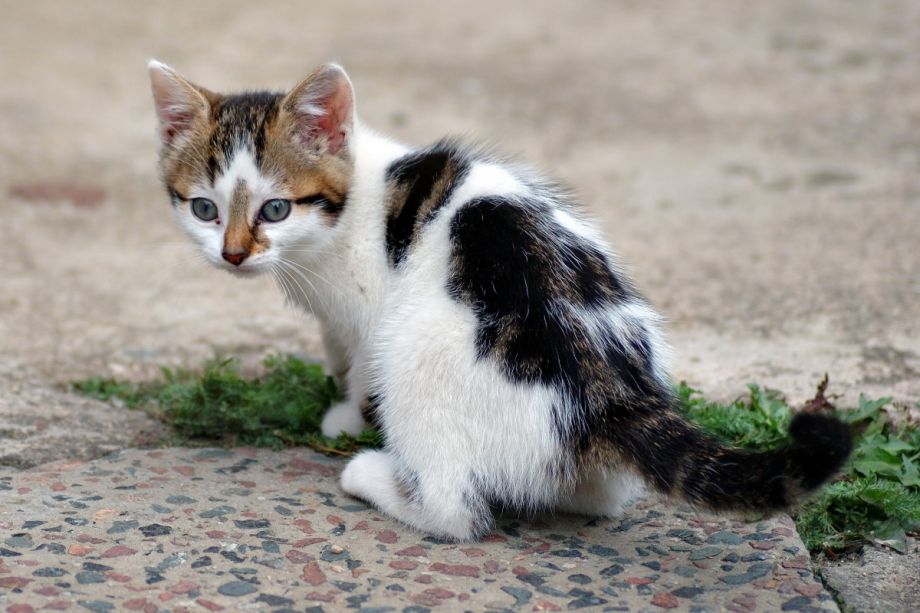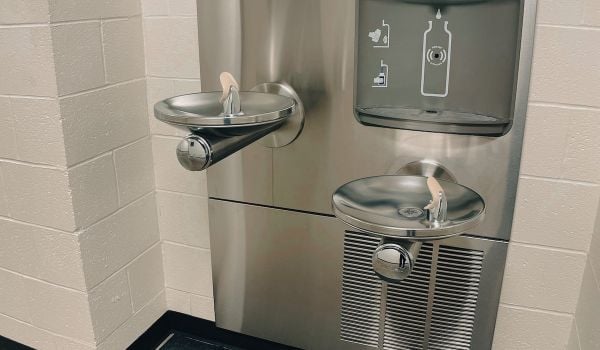Coyotes in New York City. Flying squirrels in Philadelphia. Bobcats in Los Angeles. We share our cities with a veritable menagerie. In an increasingly urbanized world, as animals lose habitat elsewhere, they’re likely to move in with us more and more. Some are pesky: termites in the walls, rats in the garbage cans. Some are incredible: an American crocodile spotted in Miami’s waters in 2013, for the first time since 1980. Some are spoiled: Does your neighbor’s Shih Tzu own more sweaters than you?
But more than a few animals are giving back. Here are a few of my favorite examples of animals going to work for the cities they call home.
1. Dogs as wastewater detectives
Dogs and their powerful noses have long been at work sniffing out drugs, explosives and crime scenes. A couple based in Turner, Maine, discovered a new canine career: detecting the presence of human waste in water. Karen and Scott Reynolds train rescue dogs to lie down next to water sources contaminated by human waste and ignore water without contamination. To date, the dogs have contributed to over 75 projects in 11 states, including projects in Detroit and San Francisco.
In Santa Barbara, the Reynolds’ dogs offered their expertise to locate the source of an outbreak of E. coli contamination. According to the Detroit Free Press, “Officials called in two of the Reynoldses’ dogs, using a special environmental grant. Working manhole cover to manhole cover in a shopping mall parking lot, the dog within two hours hit on a spot that ultimately revealed a broken sewer line under the street, leaking next to a storm drain that also was cracked, Karen Reynolds said. The city had the problem fixed within a day, she said.”
2. Birds of prey warding off peskier birds
What do London’s Trafalgar Square, New York City’s Bryant Park and San Francisco’s municipal dump have in common? In all three, trained birds of prey are working for the city to scare off nuisance pigeons and rats. (Or, in New York’s case, they were. The use of trained predator birds in Bryant Square was suspended in 2013, four months after its launch, when a hawk swooped down and tried to snatch an unsuspecting Chihuahua.)
London’s program has proven highly effective — the feral pigeon population in Trafalgar Square has dropped from 4,000 to about 120 since 2003 — but it has not been without criticism. Anti-hawk activists in London call the practice cruel: “Blood sport, pure and simple,” writes the organization Save the Pigeons. Hawks are not supposed to eat or kill pigeons, just scare them away, creating an environment so stressful that the pigeons won’t return. But activists say the birds of prey do regularly hunt to kill. Then there’s the cost: £354,829 since the program’s inception, £59,020 just last year.
Edinburgh has found a way to avoid the downsides of an otherwise effective solution. For an installation cost of just £9,000, robotic peregrines at the Waverley Rail Station can emit four different calls, flap their wings and rotate their heads. But they won’t be attacking lap dogs any time soon.
3. Bivalves for biodiversity, clean water and harbor hardiness
Some animals can do more than detect dirty water; they can actually clean it. Oysters, once the keystone species of New York Harbor, filter pollutants and anchor sea floors with their reefs. But from 1906 when the last oysters were eaten to the 1970s, when the Clean Water Act prohibited dumping in the harbor, oysters became all but extinct in New York City.
The Billion Oyster Project is working to bring them back. A project of the New York Harbor School, the BOP’s goal is to restore1 billion oysters across 100 acres of oyster reefs by 2030. Their goals are also educational: Students at the New York Harbor School are deeply engaged in restoration, and 36 public schools across the city are using oyster restoration as a lens into environmental research and other science lessons. And all oyster-loving New Yorkers can help. The BOP also partners with restaurants to return discarded oyster shells to the harbor to create resiliency-building reefs. So shuck it up!
4. The sanitation department that can lift 50 times its weight
In many cases, animals provide city services without being trained at all. According to a 2014 study by North Carolina State University researchers, ants and other arthropods on Manhattan’s Broadway and West streets alone can devour food litter equivalent to 60,000 hot dogs or 600,000 potato chips in a year. When researchers dropped potato chips, cookies and hot dogs at sites in parks and street medians, arthropods removed up to 59 percent of the food within a day.
May Berenbaum of the University of Illinois at Urbana-Champaign told New Scientist, “Recycling is among the least glamorous of ecosystem services provided by arthropods, and this was a great study highlighting both its magnitude and importance.”
5. County kittens, available for cuddling
In Las Cruces, New Mexico, a furry feline library lends not books, but cats. A “kitty kondo” in the lobby of the Doña Ana County office building provides employees with the chance to borrow a purring friend for a few hours in the office. Employees told CBS News that the cats, brought from a local shelter, might briefly lower productivity, but they also relieve stress and demonstrate that the county cares about both its workers and its animal shelter population. Hundreds of visitors enter the lobby daily, which introduces the kittens to many possible homes. Over 100 kittens have been adopted since the program began a few years ago.
The Works is made possible with the support of the Surdna Foundation.
Jen Kinney is a freelance writer and documentary photographer. Her work has also appeared in Philadelphia Magazine, High Country News online, and the Anchorage Press. She is currently a student of radio production at the Salt Institute of Documentary Studies. See her work at jakinney.com.
Follow Jen .(JavaScript must be enabled to view this email address)











